July 2017
F-
Lockheed Martin F-
809 Sqn Fleet Air Arm, HMS QUEEN ELIZABETH/HMS PRINCE OF WALES, 2020.
Fujimi 1/72 with own inkjet printed markings
The F-
After a long and occasionally difficult gestation, during which costs have multiplied,
the aircraft is now entering service across the globe. With its low observable
(stealth) design, fully integrated and comprehensive sensor suites, networked data
sources and advanced weapons, the F-
The UK intends to field 4 joint RN-
The kit itself is very nice, with generally perfect fit and lightly engraved detail.
It also seems to be reasonably accurate in shape and representative of the production
aircraft. Like Academy’s F-
Whilst the snap-
© 2017 www.gengriz.co.uk
Have a look at my RN Jets pages for more naval aircraft.
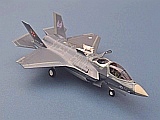
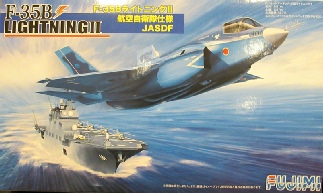
Fujimi provide two marvellous removable engines with different tailpipe versions
-
The kit does have a number of niggles, such as the lack of the wing trim nozzles (or their doors) and one major shortfall with the secondary air inlet on the fuselage top moulded shut. This is quite a major problem as the two sets of doors do not open independently on the real thing, so I resorted to a bit of hacking to open the missing inlet up, using some paper to create the visible intake trunking. Fortunately Fujimi provide the lift fan shaft (along with an entirely hidden lift fan casing) and the new hole allows the nicely moulded engine inlet fan blades to be clearly seen.
Two sets of canopies are provided, with one in black smoked plastic and one entirely
clear. The real thing is of course gold smoked, so neither is better than the other!
Weapons are provided for the very nice weapon bays, but are US specific, with two
JDAMs and a set of AMRAAMs, neither of which are planned for the UK aircraft, which
will use Meteor, ASRAAM, Paveway IV and SPEAR 3. Unlike Academy’s F-
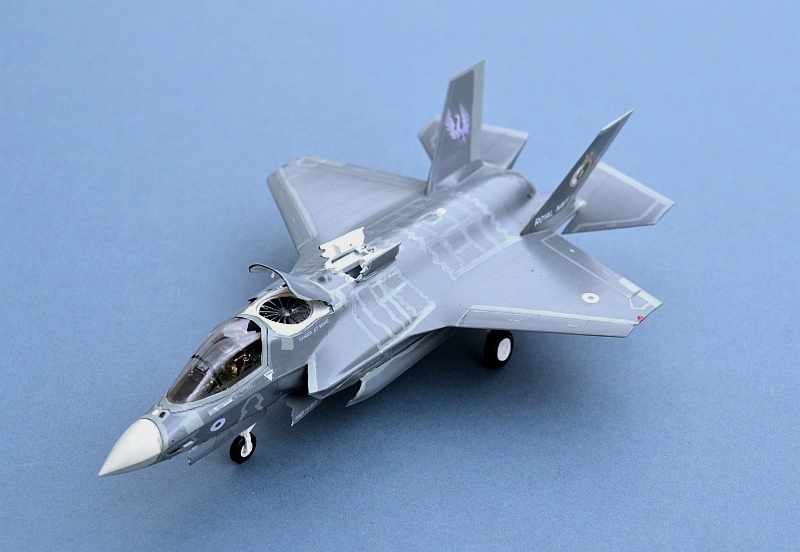
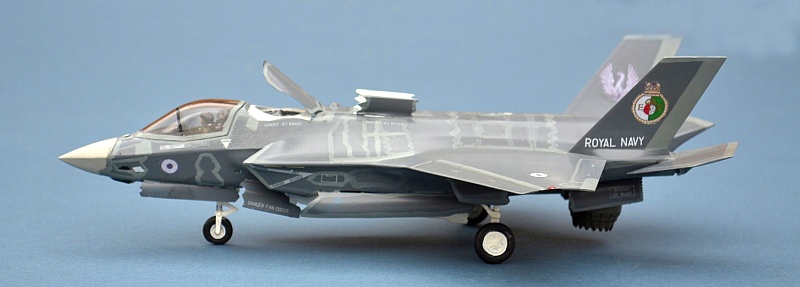
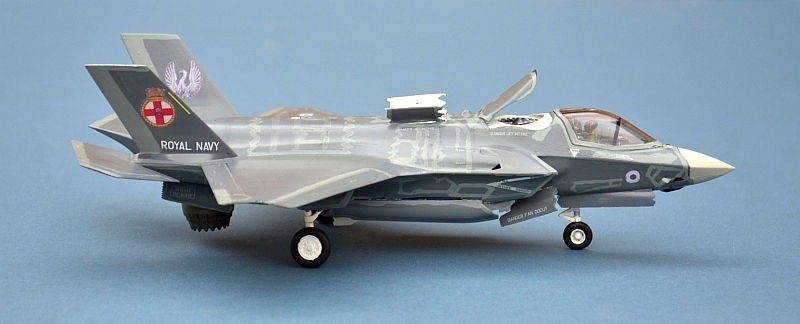
I’ve generally got on well with inkjet decals, purchasing the paper at various model
shows, but have found them a little thick and prone to curling up as they dry, so
this time I used some cheap white inkjet decal paper sourced from Amazon, which proved
much thinner and stretchier than the paper I have used before, using Powerpoint to
put together some test profiles then print the decals themselves. Having used white
paper this time, I added some grey borders to allow me some flex in cutting them
out, and this was generally successful, but matching the grey proved quite difficult.
I did think that my previous problems with thick decals might have been because
I was using Humbrol satin varnish to seal them, so I bought some proper decal sealer.
This seemed to be acrylic based and unfortunately it dissolved some of the red ink,
so after a few pink smeared tries I reverted to my old cellulose-
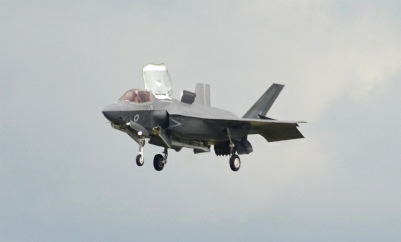
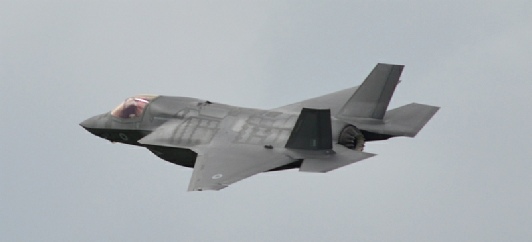
The real thing: One of the UK’s F-
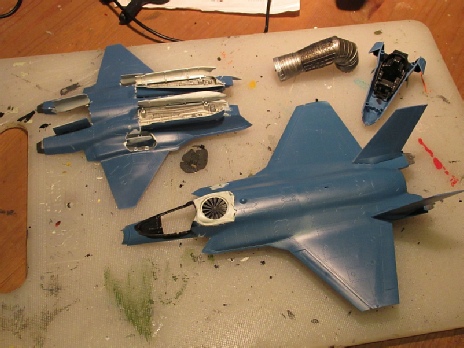
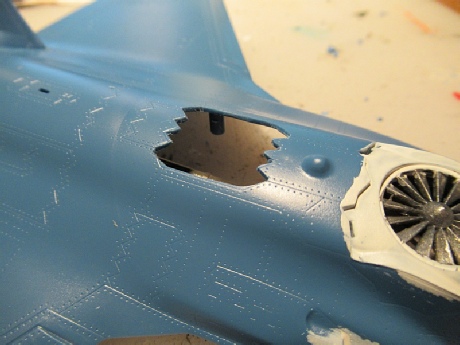
The absence of the auxiliary intake is a disappointing shortfall, especially as the kit includes a nicely detailed lift fan and its shaft, along with the detailed compressor faces for the engine.
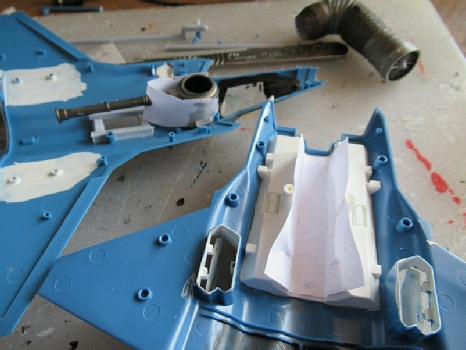
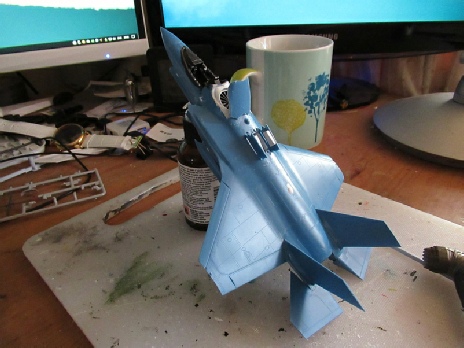
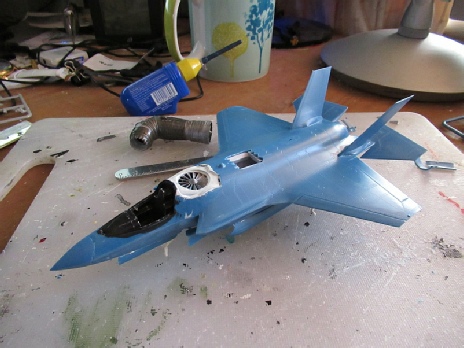

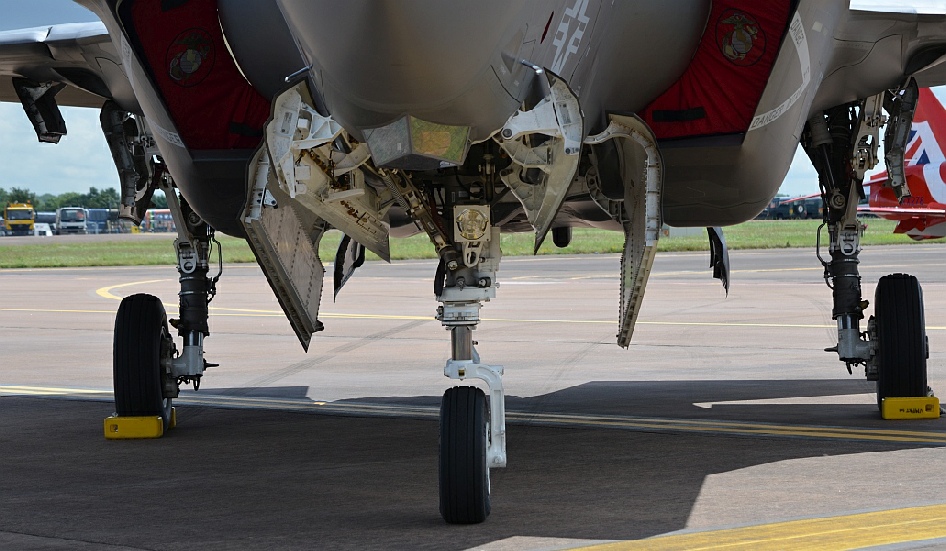
The real thing: A USMC F-
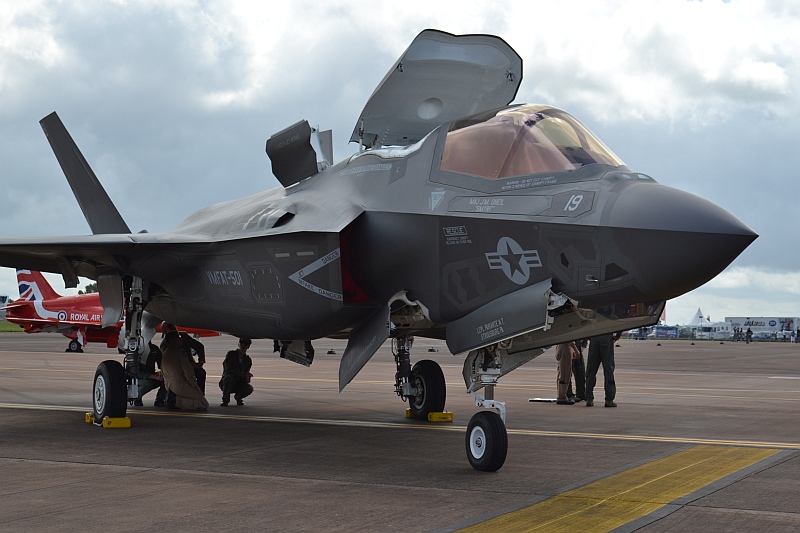


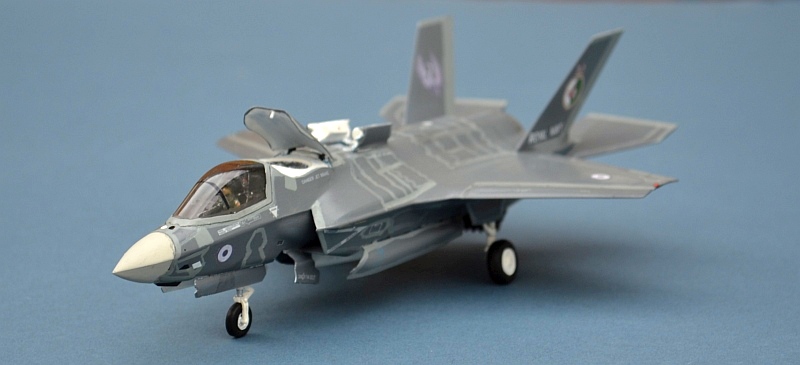

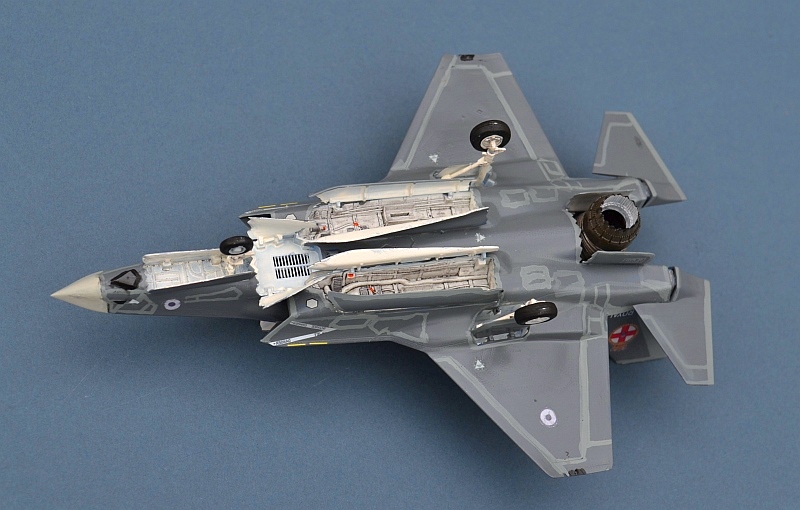

The earlier Italeri/Revell X-
Fujimi’s F-
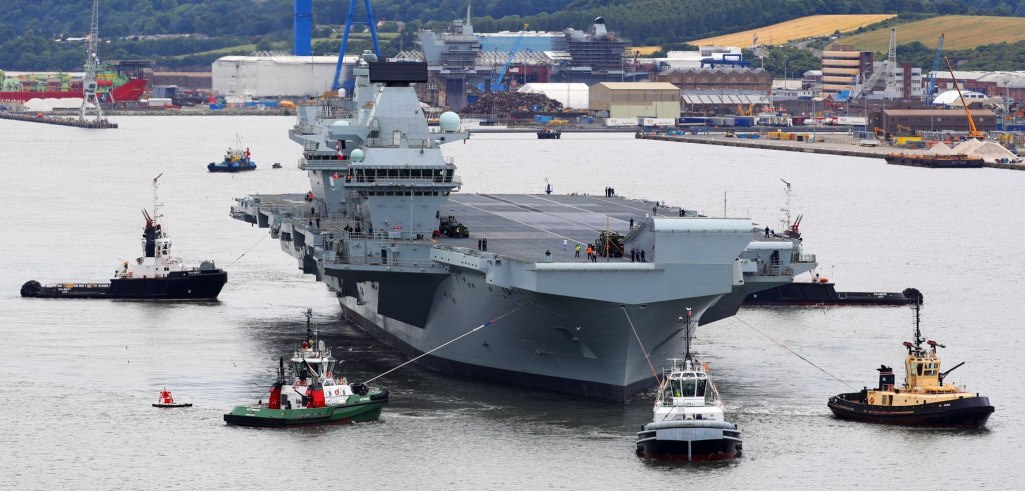
The real thing: HMS QUEEN ELIZABETH emerges from the non-
(photo courtesy of the Aircraft Carrier Alliance) It is expected that the first
F-
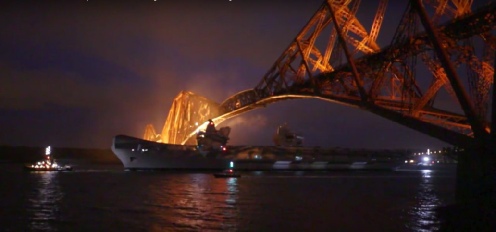
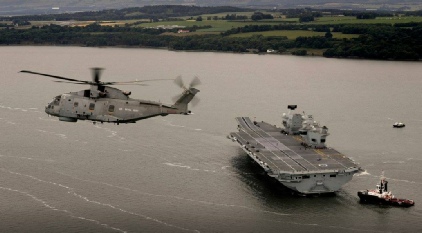
The real thing: HMS QUEEN ELIZABETH at anchor in the Firth of Forth and passing beneath the Forth Rail Bridge (photos RN/Aircraft Carrier Alliance)